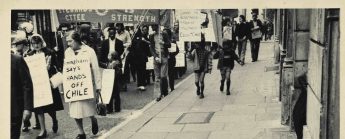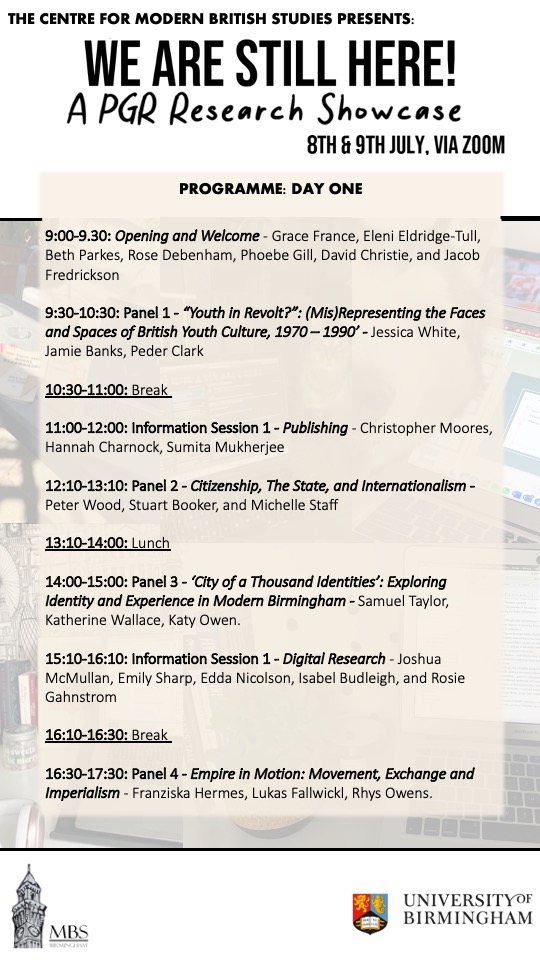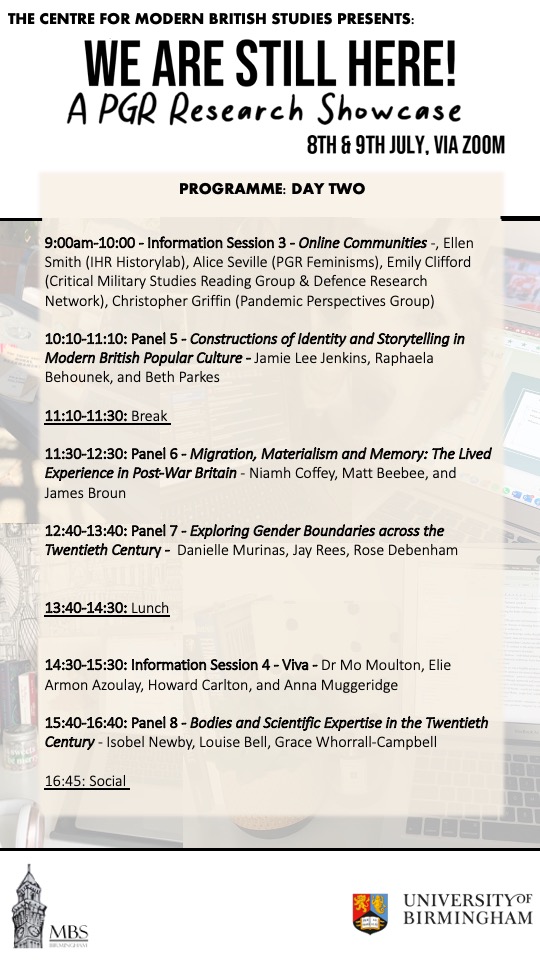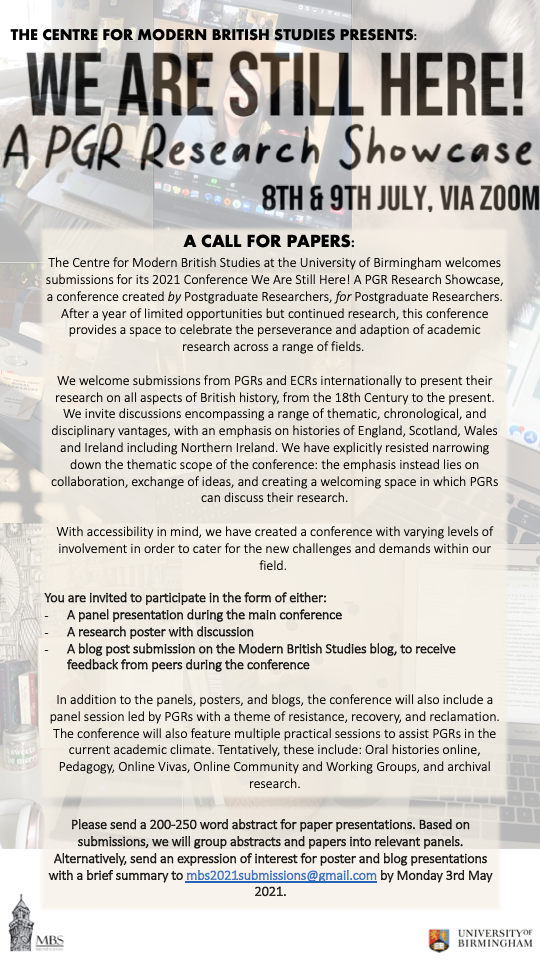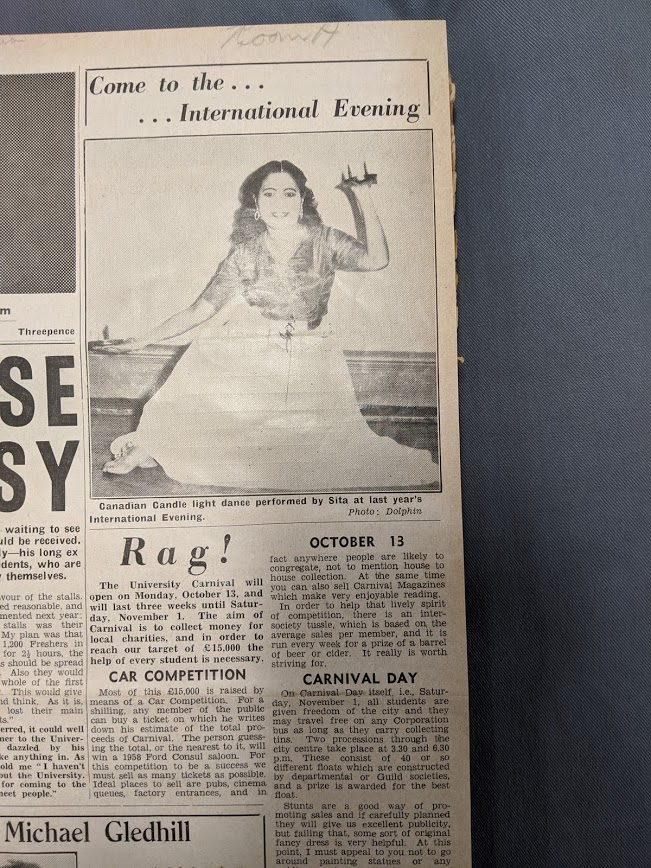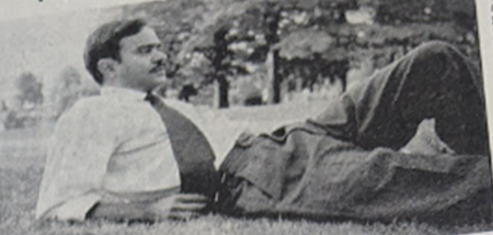This is a guest blog based on a paper delivered at the MBS 2021 PGR Research Showcase.
Rhys Owens, PhD Candidate at Swansea University
My research focuses on the relationship between Wales and the British Empire, and specifically examines Welsh people who went out to India as civil servants, missionaries, soldiers, and for other purposes, and how they thought about their place within the empire both practically and philosophically. In light of the recent focus on decolonising history, part of my aim is to actually recolonise aspects of Welsh history, to recapture the fact that the Welsh were culpable for empire as the English and that the attitude that Wales was somehow distant from empire or indeed was a victim of empire in a classic colonial sense is not accurate. Part of that research relates to the domestic perception of empire and how India was perceived and consumed through the English-language press.
So, what do the press focus on during this period? Firstly, there is a very clear interest in Welsh individuals living and working in India. The high court judge Sir Lawrence Jenkins is of particular interest. He was a bit of a rarity being a first language Welsh speaker from Cardigan who had achieved high office within the empire.1 Sir Griffith Evans and Lewis Pugh-Pugh are other prominent examples.2 But aside from these big names we also find that the press keenly followed more lowly individuals as they travelled out and worked in India, and there was a lot of local pride surrounding these people as they made a life for themselves abroad.3 So straight away we see what is still a fairly constant theme of the press, which is the classic human-interest story.
There is also an enduring interest in the missionary movement. The Welsh Calvinistic Methodist Mission was the largest missionary movement in the field in the North East and there were also other missionaries all over India. 4 The press would extensively cover their work, which was often dangerous and arduous, and print reports from lecture tours given by returning missionaries, as well as detailed information on new recruits from all parts of Wales.5 And lastly, the press took a great interest in the various Welsh societies that existed, especially in the major cities. The most famous was Cymdeithas Gwladol y Cymru yn yr India (The Welsh Society of India), which was based in Calcutta where by far the largest single Welsh community lived, but there were also fairly active societies elsewhere. 6 These societies would host events for the Welsh community, with the main annual event being the St David’s Day dinner.7
We’ve covered what the press were focusing on, but what does this all mean? The first thing which comes out strongly is a clear national angst which takes the form of concerns over Wales’ place within the empire and its contribution to it, but also an existential angst surrounding Wales’ national identity. Whereas the Scots and Irish had very strong traditions of imperial service, very few Welsh people sought opportunities in the empire.8 Whenever a Welsh person attained to a high position, it was a rarity. When the press covered individuals like Lawrence Jenkins and events like the St David’s Day dinner, they made a huge deal about their Welshness and the special qualities they believed the Welsh brought to the empire, and the language of this seems to be an attempt to claim a place within an endeavour where the Welsh were not well represented. 9 The empire was an enormously important part of the British national psyche and this was no different in Wales. Being a part of that was an important aspect of Welshness itself. The other side to this angst is a bit closer to home and revolves around the perceived degradation of national culture, especially the Welsh language. By the early 20th century only around 50% of the population spoke Welsh and the number was dropping rapidly.10 Coverage of India in the press often focused on the language, with events such as church services and society gatherings being conducted in Welsh, as well as a fairly obsessive interest in how well individuals retained their Welsh.11 This was also a major appeal of the Welsh Calvinistic Methodist mission as an organisation that conducted all of its internal activities in the Welsh language and regarded it as an almost sacred tongue.12 This obsession with the perpetuation of the language abroad reflected deep-seated fears about its demise at home, and offers an important insight into turn of the century Welsh society.
The second major theme is one of civilising mission, and this comes through in two ways- the religious in terms of the missionaries, and the secular in terms of everyone else, though the two are interconnected. In my Masters research I looked at Welsh national identity among residents in India and developed the concept of ‘Little Wales’ which was first put forward by Aled Jones and Bill Jones in the early 2000s. Relevant to the cultural angst we discussed earlier, ‘Little Wales’ was the transplantation of Welsh cultural norms to the colonial environment, and this was used as a means of taming what was considered to be an alien and often dangerous environment.13 Now in the Welsh case this would clearly
be related to concerns over the language and English dominance at home, but also to classic contemporary theories of imperialism. The very nature of missionaries is the perpetuation of cultural imperialism- the wholesale or partial replacement of what is considered an inferior culture with what is considered a superior one. The Welsh missionary movement was seeking to not only Christianise but also Europeanise and even Welshify the indigenous population, and the Welsh press got behind this mission.14 The exploits of famous missionaries were a major focus throughout the period, with the main theme being one of bold Christian men and women combatting ‘exotic’ danger in a deeply hostile environment.15 Undoubtedly the scale of the picture painted had a lot to do with raising funds from the Welsh chapel circuit, but alongside the danger we also see a clear appreciation of the value of missionary activity in the reporting of improved literacy, conversion rates, and a general belief that the presence of Christianity had led to an uplift of the people.16 So, from the religious perspective we can trace a distinct othering of the Indian population alongside a strong belief that constructing ‘Little Wales’ in India would civilise and improve their position.
On the secular side we can also see this idea. The events of the urban Welsh societies that we touched upon earlier were grand and imperial occasions, involving toasts to the Queen or King and speeches that sought to justify Wales’ position within the empire.17 So, for example, the press reported the speech of A.E. Goodwin, a temperance campaigner, at the 1902 dinner where he argued that the British Empire was raising the status of Indian women to that of the European, and in 1909 the speeches focused on the need for ‘Celtic imagination’ to solve India’s problems.18 It is unsurprising that those directly working
in the empire should have had a strong attachment to its supposed civilising mission, but the important thing here is how extensively these events and attitudes were covered in the Welsh press and how little overt anti-imperialist sentiment appeared, though there were a few examples.19 The events themselves were a clear attempt to recreate an element of Welsh life, and involved use of the language, traditional Welsh songs, and as close to traditional Welsh meals as it was possible to get under the circumstances.20 The Welsh public, through the press, felt a deep attachment to these occasions and the underlying ideology of them.
I want to finish by touching on one final theme which forms a central part of my overall research, and that’s the idea that the Welsh had a unique theory of imperialism which played upon the idea of a specific national skillset. By this, I mean a belief that the Welsh, due to their minority status within a greater British state, understood the ambitions and concerns of indigenous peoples more than the dominant English. In this conception, Welsh language ability, their greater spirituality and religious commitment, and their understanding of the importance of preserving struggling cultures, made them
compassionate and fair-minded imperialists, and could act as mediators between Indians and the English.21 Now this idea pervades through press coverage, and evidently originates from Welsh communities within the colonial environment. Every major Welsh figure mentioned above subscribed in some form to this view, and it was projected outwards to a domestic audience at home, to the extent that at a St David’s Day dinner in Rhyl in 1907 there were toasts made to non-sectarian and non-political Welshmen working towards the greater good of India.22 This is not to say that we don’t find examples of more aggressive imperialist views- Sir Griffith Evans was one of the leading voices who argued against Indian judges being given powers to try Europeans during the Ilbert controversy of the 1880s, so, we can’t be drawn into the idea that ‘Welsh imperialism’, as far as it even existed, was somehow better than English.23 But in terms of taking a four nations approach to the British Empire and teasing out some of these intra-British differences, it is an important idea and one I’m exploring further.
1 ‘Cardigan’, The Cambrian News and Merionethshire Standard, 9 January 1903: p. 6.
2 ’St David’s Day in India’, Towyn-on-Sea and Merioneth County Times, 27 March 1902: p. 7; ’Newport. Pem’, The County Echo, 7 April 1904: p. 2.
3 ‘Young Rhonddaite Leaves for India’, The Rhondda Leader, 3 March 1906: p. 7.
4 Aled Jones and Bill Jones, ‘The Welsh World and the British Empire c. 1851-1939: An Exploration’, in The British World: Diaspora, Culture and Identity, ed. By Carl Bridge and Kent Fedorowich (Abingdon: Routledge, 2003), pp. 62-63.
5 ‘Colwyn Bay in India’, The Weekly News and Visitors’ Chronicle for Colwyn Bay, Colwyn, Llandrillo, Conway, Deganwy, and Neighbourhood, 28 November 1902: p. 7.
6 ’St David’s Day in India’, The Western Mail, 29 March 1899: p. 5; Current Topics: Welsh Choir, The Times of India, 25 Sep 1945: p. 4.
7 ’St David’s Day in India’, The Western Mail.
8 H.V. Bowen, ‘Introduction’, in Wales and the Overseas Empire: Interactions and Influences, 1650-1830, ed. by H.V. Bowen (Manchester: Manchester University Press, 2011), pp. 1-14.
9 ’St David’s Day in India’, The Cambrian, 6 April 1900: p. 5.
10 John Davies, A History of Wales (Penguin Books: London, 2007), pp. 482-3.
11 ‘By the Way’, The Western Mail, 25 October 1893: p. 4.
12 Aled Jones, ‘Welsh Missionary Journalism in India, 1880-1947’, in Imperial Co-Histories: National Identities and the British Colonial Press, ed. by Julie F. Codell (Madison: Fairleigh Dickinson University Press, 2003), p. 248.
13 Aled Jones and Bill Jones, ‘The Welsh World and the British Empire’, pp. 63-64.
14 Aled Jones, ‘Sacred Spaces: Cultural Geographies of Mission in Welsh Sylhet, 1849-1940, The Welsh History Review, 26 (2012), pp. 215-6.
15 ‘Missionary Meeting at Cadoxton’, The South Wales Star, 4 December 1891: p. 7.
16 ‘Local Intelligence’, The Cambrian, 24 September 1886: p. 5.
17 ’St David’s Day in Poona’, The Times of India, 6 March 1946: p. 5.
18 ‘St David’s Day in Calcutta’, The Cambrian, 28th March 1902: 6; ’Welshmen in India’, The
Montgomeryshire Express and Radnor Times, 30th March 1909: 3.
19 ‘Remember the Native Indians’, South Wales Daily News, 29th April 1890: 2.
20 ’St David’s Day in India’, The Cambrian.
21 ’Our Calcutta Letter: The Welsh Dinner’, The Times of India, 06 Mar 1914: 10.
22 ‘Dinner at Rhyl’, The Welsh Coast Pioneer and Review for North Cambria, 7 March 1907: p. 3.
23 ’Death and Funeral of Sir Griffiths Pugh Evans’, The Cambrian News and Merionethshire Standard, 14 February 1902: p. 3.
